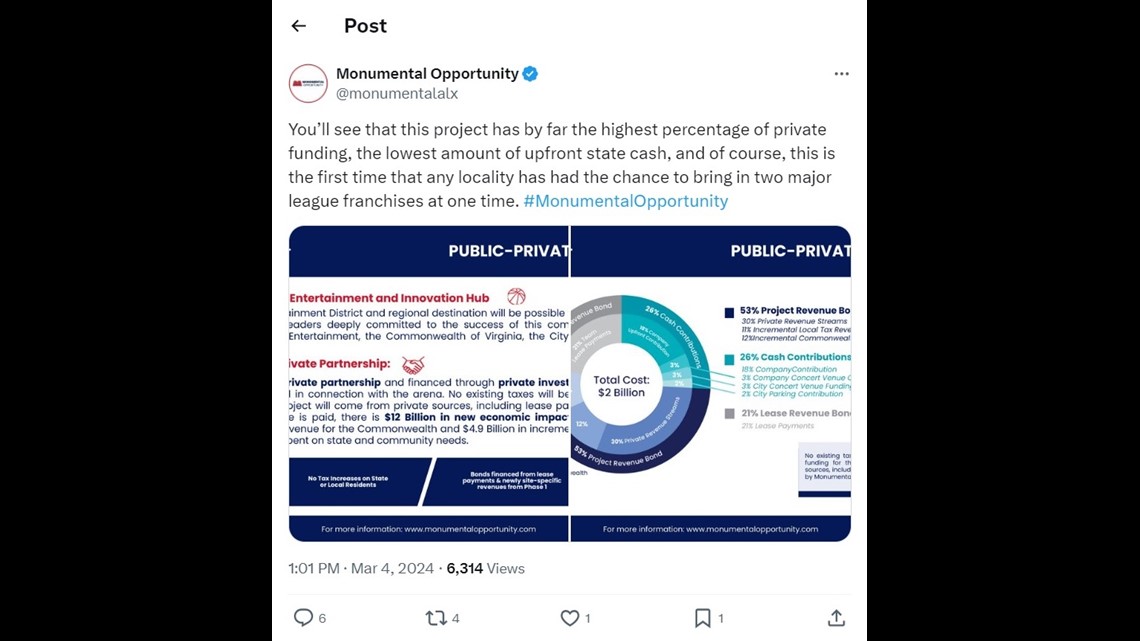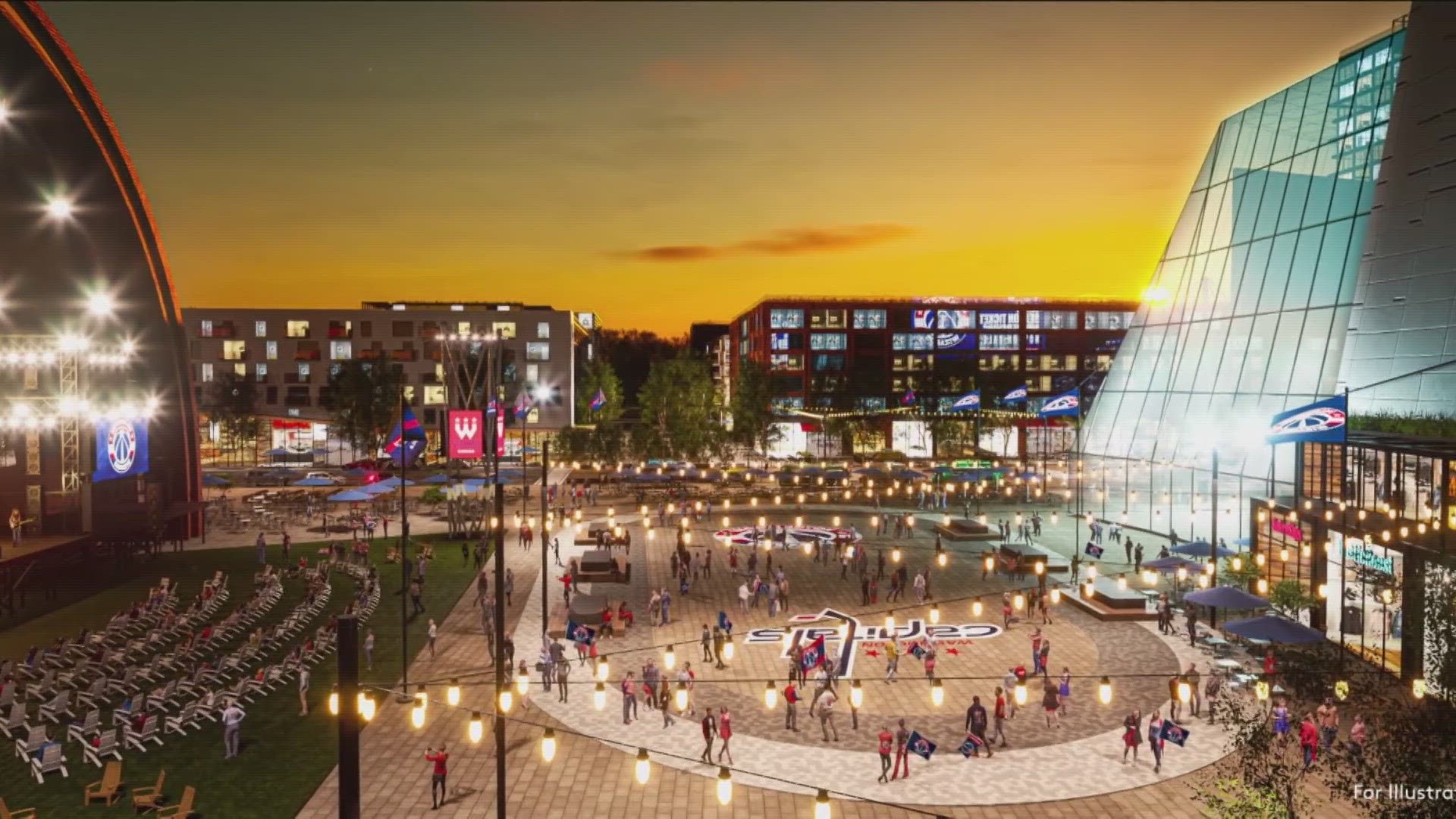WASHINGTON — As the Virginia Legislature continues to debate the billion-dollar taxpayer-backed funding package for an arena in Alexandria, Monumental Sports and Entertainment made some bold claims on social media about the project's financing. And those statements, in a social media post that has since been deleted, caught a lot of people’s attention.


QUESTION
Does the proposed arena project have the highest percentage of private funding and the lowest amount of upfront state cash of any recent stadium project?
SOURCES
ANSWER
No, multiple stadiums built since 2000 used no public financing.
WHAT WE FOUND
Ted Leonsis, the owner of Monumental Sports and Entertainment, reached an agreement with Virginia Gov. Glenn Youngkin and the City of Alexandria to build a mixed-use complex in the Pomotac Yard neighborhood. The anchor of the complex would be an arena that would serve as the new home of the Washington Wizards and Washington Capitals. The construction project would be paid for with $2.8 billion in bonds from the State of Virginia. Monumental pledged $400 million, as well.
While most stadium construction projects do receive public funding, some have been entirely privately financed.
Stan Kroenke, owner of the Los Angeles Rams, paid for the entirety of the construction costs of SoFi Stadium in Inglewood, California. In an agreement with the City of Inglewood that was approved by voters, Kroenke receives a tax incentive to offset the cost of infrastructure improvements if the stadium generates more than $25 million in a given year. That stadium cost approximately $5 billion to build before it opened in 2020.
A handful of other recent stadiums and arenas were also constructed without the use of public funds:
- MetLife Stadium in East Rutherford, New Jersey, the home of the New York Giants and New York Jets, was built with funding from the two teams and the National Football League.
- Chase Center in San Francisco, the home of the Golden State Warriors, claims to be the only modern stadium built entirely with private financing and on private land.
- Oracle Park, also in San Francisco and the home of the San Francisco Giants, was also built without any taxpayer money.
- Yankee Stadium in New York City, the home of the New York Yankees, was built with a combination of private money and PILOT bonds based on future ticket sales and lease payments.
QUESTION
Would this be the first time a city has had the chance to bring in two major professional sports teams at the same time with one venue?
SOURCES
- WUSA9 reporting
- SoFi Stadium website
- Atlanta History Center
ANSWER
The Potomac Yard arena would not be the first to attract two teams to a new city. It would not even be the first time the Capitals and Wizards moved together.
WHAT WE FOUND
Having both the Capitals and Wizards based in the same arena would promise consistent traffic for Alexandria businesses and consistent work for all the employees needed to operate a stadium. The promise of a busy venue and the associated tax revenue from games and events would help to pay back the construction bonds.
However, this setup would not be unique to Alexandria.
Kroenke built SoFi Stadium to bring the St. Louis Rams to Los Angeles, but the San Diego Chargers also moved to Los Angeles to share that stadium.
When Atlanta Fulton County Stadium opened in 1966, it enticed the Milwaukee Braves to move to Atlanta and also became the home of the expansion Atlanta Falcons. The Falcons would move to the Georgia Dome in 1992, and the teams have played in separate venues ever since.
But this would also not be the first time the Capitals and Wizards moved to a new arena in a new city together. They moved from their previous home in Landover, Maryland when Capital One Arena, then known as the MCI Center, opened its doors in Washington D.C. in December 1997.
Shortly after WUSA9 asked Monumental Sports and Entertainment to comment on the claims in its post, it deleted the post. It replaced it with another post that said “This project features a significantly higher percentage of private financing than MANY other stadium and arena projects.”
The new post also featured a chart that compared the Potomac Yard proposal to stadium agreements in Tennessee, Buffalo, Oklahoma City, and Las Vegas. Monumental also noted that the previous version did not include the comparison chart for context, but it did not address the claim that no other city has had the chance to bring two major professional teams to one new stadium.

